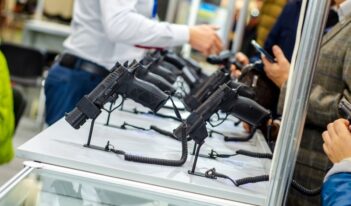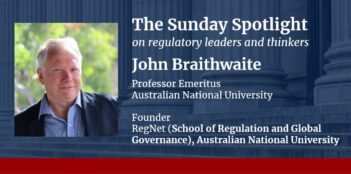
Recent research confirms that guns’ lethality increases with their caliber.
“Guns don’t kill people, people kill people” is a well-known slogan used by the National Rifle Association and other pro-gun activists to make the case for their deregulation agenda. This view suggests that the weapon type does not matter, as an assailant who is determined to kill will do whatever is necessary to accomplish that purpose. Whether the victim lives or dies is viewed as a reliable measure of the shooter’s intent, and in particular the shooter’s determination to kill.
Criminal law conforms with this view by reserving the most severe punishments, such as the death penalty and life without parole, for murderers. The “people kill people” argument suggests that enhanced gun controls would do little to change homicide rates as the intent of the killer matters much more than the weapon.
Our new research, along with other compelling evidence, demonstrates that this view is false and that the type of weapon used is highly influential in determining whether the victim of an assault lives or dies.
Indeed, that was the conclusion of the very first research paper ever published that was relevant to the gun debate. Fifty years ago, law professor Franklin Zimring demonstrated that serious knife assaults are similar to shootings in many respects, including apparent determination to kill or injure the victim, yet the gun assaults had a much higher “case fatality rate.”
In 1972, Zimring followed with an analysis comparing attacks with different types of guns. Once again, he demonstrated that nonfatal and fatal shootings were similar with respect to the circumstances and observed characteristics of the victims and assailants. He further found that the likelihood of death increased sharply with the caliber of the shooter’s firearm, as would be expected if the intrinsic power and lethality of the weapon mattered.
Zimring concluded that there was a large random component to the outcome of gun assaults and that the firearm caliber was a systematic factor that influenced whether the victim lived or died. He labeled this phenomenon “instrumentality.”
Both of Zimring’s pioneering studies, and several others since then, suggest that “guns do kill people” and support the position taken by gun control advocates that reducing availability of guns to violence-prone people would save lives, even if they substituted knives and clubs. Indeed, even regulations that caused a substitution of less powerful guns for more powerful ones would save lives.
A recent RAND Corporation survey of firearms policy experts highlights the importance of instrumentality in the gun debate. Subjects were asked to consider the impact of a policy that was successful in reducing the gun homicide rate on the overall homicide rate. Relative to their counterparts who favored more restrictive gun controls, subjects who tended to favor deregulation were more likely to believe that the policy would not impact overall homicide rates, as assailants would simply substitute other weapons for guns.
Instrumentality, however, is a matter of fact rather than simply opinion.
In order to better establish the magnitude of the instrumentality effect, we replicated the 1972 Zimring analysis but with better data and more sophisticated statistical techniques. We collected detailed Boston Police Department data on fatal and nonfatal shootings in Boston between 2010 and 2014. The working sample included all 221 gun homicides and 300 randomly selected nonfatal cases drawn from the 1,012 non-fatal gun assaults where the victim suffered a gunshot wound that occurred during the five-year period.
Boston Police investigations determined firearm caliber in about 63 percent of nonfatal cases and about 83 percent of fatal cases. We divided these 367 cases into three groups by small, medium, and large caliber. Comprehensive statistical analysis revealed that firearm caliber had no systematic association with the number of wounds, the general location of wounds, the circumstances of the assault, or victim characteristics. This lack of systematic association is what would be expected if caliber were “assigned” at random in these criminal assaults, akin to a natural experiment.
Just as with Zimring’s findings, we found a strong positive association between death rate and caliber.
Relative to criminal assaults involving small-caliber guns, the likelihood of death was more than doubled for criminal assaults involving medium-caliber guns and nearly five times greater for criminal assaults involving large-caliber guns. Based on these estimates, we ran a simulation that found that if the medium and large caliber guns had been replaced with small caliber guns in these criminal assaults, and all else had remained the same, it would have reduced gun homicides by nearly 40 percent. This percentage reduction in fatalities provides a measure of the overall effect of instrumentality associated with caliber for our sample.
The research literature on instrumentality provides insight into the nature of homicide. Whether the victim of a serious assault lives or dies is to a large extent a matter of chance rather than of assailant intent. The probability of death is connected to the intrinsic power and lethality of the weapon. For many observers, that conclusion is simple common sense, but for others perhaps the empirical evidence will now be persuasive.
In any event, as Zimring recognized 50 years ago, this issue of whether the use of guns in acts of violence increases fatality risk is foundational to the debate over gun control. That issue will continue to be debated as long as participants in the gun debate treat the matter as one of arguable opinion rather than what it is: a measurable fact.
This essay is part of a nine-part series, entitled Bringing Expertise to the Gun Debate.





